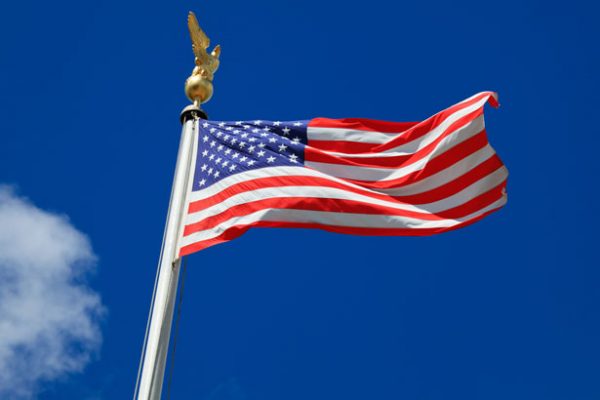In fiscal year 2016, the Department of Justice recovered over $4.7 billion in settlements and judgments from civil cases involving fraud and false claims against the government. This is the third highest annual recovery in False Claims Act history, bringing the fiscal year average to nearly $4 billion since fiscal year 2009, and the total recovery during that period to $31.3 billion.
“Congress amended the False Claims Act 30 years ago to give the government a more effective tool against false and fraudulent claims against federal programs,” said Benjamin C. Mizer, head of the Justice Department’s Civil Division. “The beneficiaries of these efforts include veterans, the elderly, and low-income families who are insured by federal health care programs; families and students who are able to afford homes and go to college thanks to federally insured loans; and all of us who are protected by the government’s investment in national security and defense. In short, Americans across the country are healthier, enjoy a better quality of life, and are safer because of our continuing success in protecting taxpayer funds from misuse.”
Major Recovery Industries
Of the $4.7 billion recovered, $2.5 billion came from the health care industry, including drug companies, medical device companies, hospitals, nursing homes, laboratories, and physicians. The $2.5 billion recovered in fiscal year 2016 reflects only federal losses. In many of these cases, the Department was instrumental in recovering additional millions of dollars for state Medicaid programs. This is the seventh consecutive year the Department’s civil health care fraud recoveries have exceeded $2 billion.
The next largest recoveries came from the financial industry in the wake of the housing and mortgage fraud crisis. Settlements and judgments in cases alleging false claims in connection with federally insured residential mortgages totaled nearly $1.7 billion in fiscal year 2016 – the second highest annual recovery in this area.
However, as the False Claims Act is the government’s primary tool to recover taxpayer funds taken by fraud, the Act has been used to recover taxpayer money in virtually every area that involves government funding. Fiscal year 2016 was no exception to the wide-range of the False Claims Act as recoveries were achieved in varied areas including defense and national security, food safety and inspection, federally insured loans and mortgages, highway funds, small business contracts, agricultural subsidies, disaster assistance, and import tariffs.
Customs Fraud Enforcement Makes An Impact
Customs fraud was a particularly important area for the False Claims Act in 2016 as the Justice Department recovered a total of $50 million in this area. Frohsin Barger & Walthall is honored to have been able to contribute to this effort by helping recover $3 million in February 2016 from customs fraud case United States ex rel. Graphite Electrode Sales, Inc. v. Ameri-Source Holdings, Inc., et al. Case No. 13-cv-0474 (W.D. Pa).
In highlighting customs fraud, the Department of Justice noted that “U.S. Customs and Border Protection collects duties on imports of foreign goods to protect U.S. manufacturers from unfair competition abroad. Importers who seek an unfair advantage by knowingly evading or reducing their obligation to pay these duties are subject to damages and penalties under the False Claims Act. These recoveries both address lost duties and help safeguard U.S. markets.”
Frohsin Barger & Walthall case United States ex rel. Graphite Electrode Sales, Inc. v. Ameri-Source Holdings, Inc case is a excellent example of this important initiative as the defendant Ameri-Source was found to have illegally misrepresented imports of graphite electrodes in order to avoid paying millions of dollars in antidumping duties. These antidumping duties were imposed to help protect domestic industries from unfair Chinese competition. However, by evading such duties, Ameri-Source flouted the protection for the U.S. industry and gained an unfair advantage over law-abiding importers such as our client Graphite Electrode Sales. Frohsin Barger & Walthall thanks the Department of Justice for their assistance in this case and for highlighting the importance of customs fraud enforcement.
Whistleblowers Are Again Vital to False Claims Act Success
Of the $4.7 billion the government recovered in fiscal year 2016, $2.9 billion was recovered due to lawsuits filed under the qui tam, or whistleblower, provisions of the False Claims Act. In 2016, the government paid out $519 million to whistleblowers who exposed fraud and false claims by filing a qui tam complaint.
The number of lawsuits filed under the qui tam provisions of the Act has grown significantly since 1986, with 702 qui tam suits filed this past year – an average of 13.5 new cases every week. The growing number of qui tam lawsuits, particularly since 2009, has led to increased recoveries. From January 2009 to the end of fiscal year 2016, the government recovered nearly $24 billion in settlements and judgments related to qui tam suits and paid more than $4 billion in whistleblower awards during the same period.
“The qui tam provisions provide a valuable incentive to industry insiders who are uniquely positioned to expose fraud and false claims to come forward despite the risk to their careers,” said Principal Deputy Assistant Attorney General Mizer. “This takes courage, for which they are justly rewarded under the Act.” Private citizens who bring cases on behalf of the government under the qui tam provisions are entitled by statute to receive between 15-30 percent of the government’s recovery as well as their attorney’s fees.
Read the full Department of Justice press release here






Talk with an Expert
Frohsin Barger & Walthall
Call 205.933.4006 or
Send us a Message